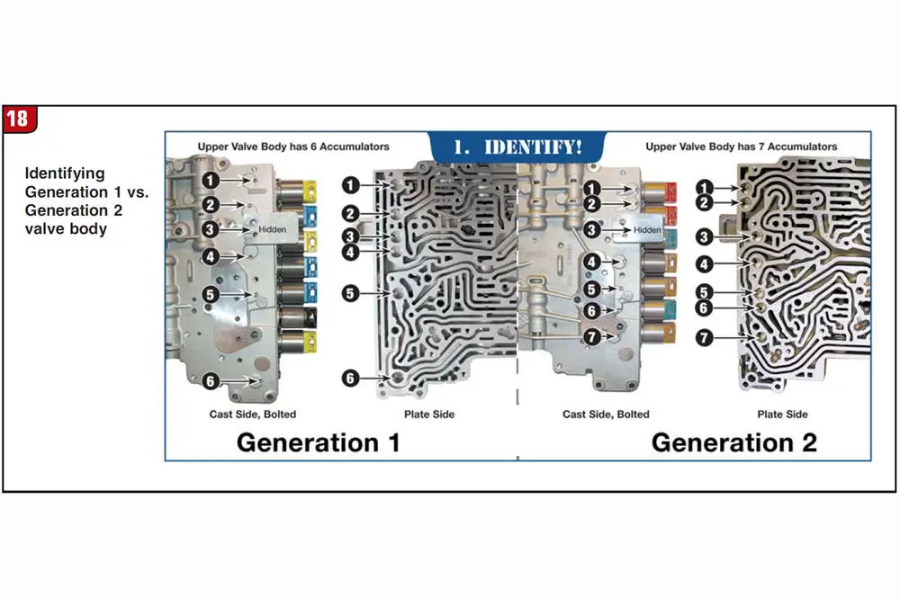If you’re delving into the realm of automotive transmissions, the ZF 6HP Generation 2 might have crossed your path. This transmission system is celebrated for its reliability and performance, but when things go wrong, solenoids—the unsung heroes of this system—are often at the heart of the issue. Solenoids are crucial for ensuring smooth gear shifts and overall transmission functionality.
Imagine your vehicle running smoothly one moment and stuttering the next. Often, such problems can be traced back to malfunctioning solenoids within the ZF 6HP Generation 2 transmission. Understanding these components is key for both diagnosis and maintenance. In this guide, we’ll explore the essentials of solenoids within this transmission system, helping you master the complexities of the ZF 6HP Generation 2 solenoid diagram PDF.
Understanding Solenoids and Their Role in Transmission
Solenoids are fundamental to the operation of automatic transmissions like the ZF 6HP Generation 2. These electromechanical devices manage fluid flow within the transmission, impacting gear shifts and overall performance.
When an electrical current passes through a solenoid coil, it generates a magnetic field that engages or disengages specific components. This action allows for precise control over power transmission from the engine to the wheels.
In essence, solenoids function as valves. They regulate hydraulic pressure, ensuring smooth gear transitions. Without them, shifting would be erratic and unpredictable. Proper functioning of solenoids is vital for a seamless driving experience; a malfunctioning solenoid can cause erratic shifts or even complete transmission failure.
Types of Solenoids in the ZF 6HP Generation 2 Transmission
The ZF 6HP Generation 2 transmission uses several types of solenoids, each essential for its operation:
- Pressure Control Solenoid: Regulates hydraulic pressure to ensure smooth shifting. It adjusts in real-time based on engine load and speed.
- Shift Solenoid: Manages gear changes by controlling the engagement of clutches and brakes. Its precise operation allows for smooth transitions between gears.
- Torque Converter Lock-Up Solenoid: Optimizes efficiency during highway driving by locking the converter at specific speeds, improving fuel economy and reducing engine strain.
Understanding these components is crucial for effective maintenance and ensuring smooth vehicle performance.
How to Read and Interpret a Solenoid Diagram for the ZF 6HP Generation 2 Transmission
Interpreting a solenoid diagram for the ZF 6HP Generation 2 transmission may seem complex, but it becomes manageable with practice. Here’s a step-by-step guide:
- Identify Key Components: Look for labels indicating each solenoid’s function, such as “shift,” “pressure,” or “lockup.”
- Understand Wiring Connections: Lines in the diagram represent electrical pathways, crucial for diagnosing issues with solenoids. Follow these lines to trace power flow.
- Check Color Coding: Color codes often signify different functions or operational states of solenoids.
- Refer to Legends and Notes: Any accompanying legend or notes in the PDF will provide additional details, enhancing your troubleshooting capabilities.
By familiarizing yourself with these aspects, you’ll gain confidence in diagnosing and resolving solenoid-related issues.
Troubleshooting Common Solenoid Issues
Recognizing common symptoms of solenoid issues can save time and prevent costly repairs:
- Delayed Shifting: Often a sign of solenoid malfunction.
- Erratic or Harsh Gear Shifts: May indicate improper hydraulic pressure due to a faulty solenoid.
- Dashboard Warning Lights: These lights can signal transmission problems related to solenoids.
- Unusual Sounds: Whining or grinding noises may indicate solenoid issues.
Regular diagnostics using an OBD-II scanner can help identify error codes associated with faulty solenoids, allowing for early intervention.
Tips for Maintaining and Replacing Solenoids in the ZF 6HP Generation 2
Proper maintenance and replacement of solenoids are crucial for optimal performance:
- Regular Inspections: Check for wear, corrosion, or leaks around solenoid connections.
- Use OEM Parts: Ensure compatibility and reliability by using original equipment manufacturer parts.
- Clean Thoroughly: Before installation, clean the area to avoid debris-related problems.
- Follow Torque Specifications: Correct torque is essential to avoid damage or leaks.
- Monitor Performance: After replacement, keep an eye on transmission performance for any unusual behavior.
If you’re unsure about DIY repairs, professional servicing may be a wise choice for complex components like solenoids.
Conclusion
The ZF 6HP Generation 2 transmission is a sophisticated piece of engineering, with solenoids playing a vital role in its operation. Understanding the function and maintenance of these solenoids is essential for keeping your vehicle running smoothly.
By familiarizing yourself with solenoid types, diagram reading, and troubleshooting techniques, you can enhance your vehicle maintenance skills and ensure optimal transmission performance. Access to resources like the ZF 6HP Generation 2 solenoid diagram PDF can be invaluable as you navigate repairs or maintenance tasks related to your transmission system.
Explore the forefront of technology and innovation at Kongo tech.



